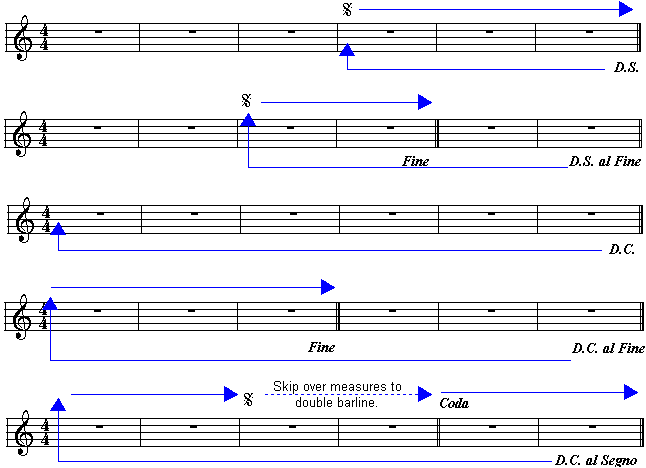Formal music notation includes a rich vocabulary of Italian words and abbreviations to indicate that the musician should continue the performance at another location in the score, such as at the beginning of the score, or at some a segno (sign), usually  or
or  .
.
Musician supports the notation and playback of such "go to" instructions in the following ways:
 | Enter segno marks  or or  using the Symbol Palette, as described in Special Symbols. using the Symbol Palette, as described in Special Symbols. |
 | Use the free text feature to enter instructions that include Italian terms such as Dal Segno (D.S.), Da Capo (D.C.) and Fine. |
 | Use the Repeat Instructions command in the Measure and Barline Menus to specify exactly how the "go to" instructions should be performed during playback. |
Even in contemporary music, the segno marks and Italian instructions are sometimes used, but you can certainly write out instructions in your preferred language, or mix it with symbols, such as "Return to  ".
".
For your reference, here are some of the most common Italian "go to" instructions:
 | D.S. (dal segno) means "to the sign". |
 | D.C. (Da Capo) means "to the beginning (head)" of the song. |
 | Fine means "end" of the song, even if this mark is not at the last measure of the song. |
 | al means "then to". For example, D.S. al Fine means "to the sign and then to the end" of the song. |
 | Coda means "ending" of the song. The start of the Coda is usually indicated with double barlines, and the ending extends to the last measure of the score. |







![]() or
or ![]() .
.![]() ".
".